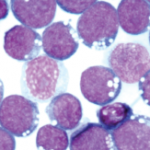ACR CONVERGENCE 2020—The definition of cell type depends increasingly on a cell’s molecular features. On Friday, Nov. 6, 2020, Alex Kuo, PhD, senior scientist at Stanford University School of Medicine, Stanford, Calif., described six technologies that are relatively mature and can be used for rheumatic disease research: Rapidly developing single-cell RNA sequencing (scRNA-seq); Cellular indexing…

Food for Thought: On Eating & Inflammation in Rheumatic Disease
Certain nutrients or dietary patterns may affect inflammation and rheumatic disease risk in certain populations. Recommended nutrients include omega-3 fatty acids found in fish, poultry or nuts. Following a Mediterranean or standard Western diet may affect RA risk too.

Lupus Nephritis: New Decade, New Approaches
Experts say progress is being made on a variety of fronts in lupus nephritis. New data, for instance, shows that repeat biopsy beyond that used for diagnosis can help guide treatment and greatly reduce the flare rate. New treatments – including belimumab and the calcineurin inhibitors tacrolimus and voclosporin — have yielded improved response rates in LN…

Can We Predict & Prevent Pregnancy Complications in Patients with Lupus & APS?
ACR CONVERGENCE 2020—New evidence, though derived from small numbers, suggest that treatment with the TNF-inhibitor certolizumab could help improve high-risk pregnancy outcomes in women with antiphospholipid syndrome (with or without systemic lupus erythematosus) and lupus anticoagulants, an expert said. In the Phase 2 IMPACT trial, which has already enrolled 27 women and is continuing to…
Lupus Immunology Trends Provide Insights for Rheumatologists
ACR CONVERGENCE 2020—With an understanding of the key causes that are behind immune abnormalities in systemic lupus erythematosus (SLE), rheumatologists gain insights into this disease. During the ACR Convergence session Immunology Update—The Decade in Review: 10 Steps to SLE, Chandra Mohan, MD, PhD, Hugh Roy and Lillie Cranz Cullen Endowed Professor, University of Houston, provided…
Newer Targets Pave the Way for Future Lupus Therapies
ACR CONVERGENCE 2020—Although rheumatologists have struggled with a lack of new therapies for systemic lupus erythematosus (SLE), recent positive trial results have brought renewed hope for more treatments. That was the theme of the ACR Convergence 2020 session, State of the Art: Lupus—The Future Is Now, led by Peggy Crow, MD, the Benjamin M. Cohen…

Studies Examine Peripheral Nervous System Disease in Lupus Patients
Although systemic lupus erythematosus (SLE) affects both the central nervous system (CNS) and peripheral nervous system (PNS), past research has primarily focused on how lupus affects the CNS. Now, an international, inception cohort study, “Peripheral Nervous System Disease in Systemic Lupus Erythematosus,” published in Arthritis & Rheumatology, has examined different types of PNS disease to…

What’s the Role of Epstein-Barr Virus Reactivation in Lupus Development?
A strong association between Epstein-Barr virus (EBV) infections and systemic lupus erythematosus (SLE) has been known since the 1970s. Although the etiology of SLE is not fully established, multiple genetic factors and polymorphisms in genes involved in the immune system have been implicated, with environmental factors also contributing to the development of this complex condition….

ACR Convergence 2020: Study Data for Lupus & Rheumatoid Arthritis
ACR CONVERGENCE 2020—At the annual meeting’s second Plenary Session, Saturday, Nov. 7, speakers highlighted phase 2 results of a potential new biologic for systemic lupus erythematosus (SLE), as well as data on remission maintenance in rheumatoid arthritis (RA) after withdrawal of etanercept or methotrexate. Phase 2 Trial of Monoclonal Antibody for Lupus (LILAC) Several converging…

ACR Convergence 2020 Kicks Off: Plenary session speakers highlight racial differences in lupus & COVID-19-related findings
ACR CONVERGENCE 2020—The ACR’s first fully virtual annual meeting kicked off on Thursday, Nov. 5. During the Opening Session, ACR President Ellen M. Gravallese, MD, talked about how the specialty’s response during the pandemic has provided great hope and will help rheumatology become an even more essential specialty. At the first Plenary Session on Friday,…
- « Previous Page
- 1
- …
- 15
- 16
- 17
- 18
- 19
- …
- 47
- Next Page »